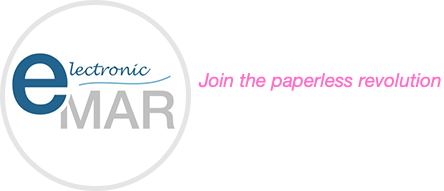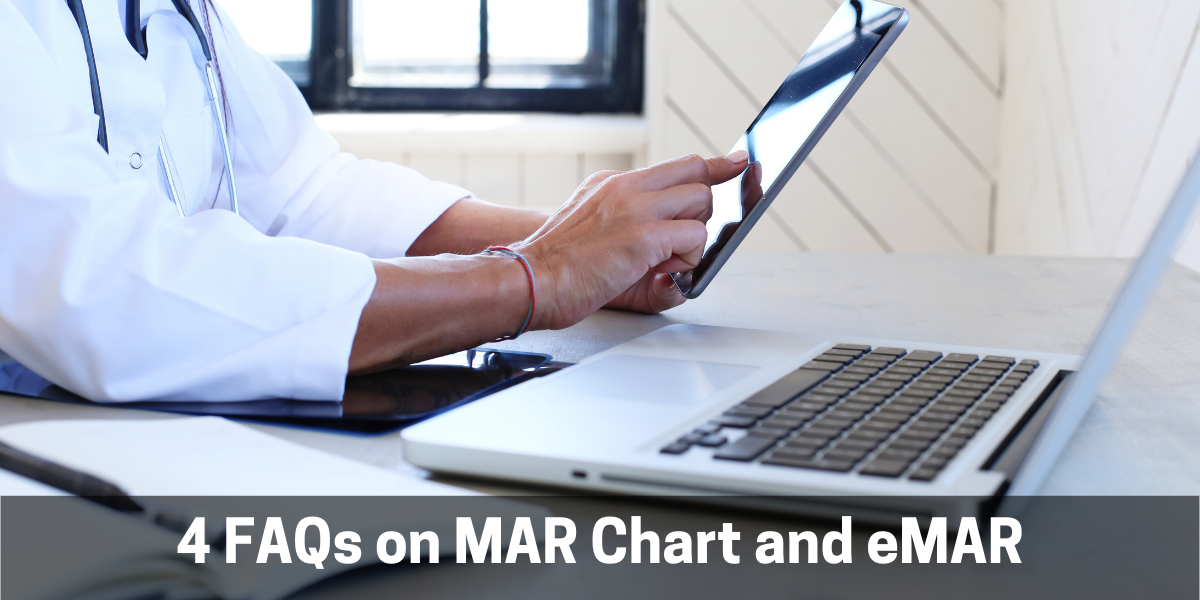MAR charts (Medication Administration Records) are documents used in healthcare settings such as nursing homes, care homes, respite care settings, and long-term care facilities. Healthcare providers have to record and document each and every incident of medication administration on MAR charts. Also, MAR charts must be updated regularly to keep track of patients’ doses, side effects, and potential allergic reactions to new or existing medications. Here we discuss some of the FAQs on MAR chart and medication and eMAR:
Question 1: What is meant by a MAR chart?
MAR (Medication Administration Record) is a document used for tracking medication administration in healthcare settings. The MAR chart medication sheet consists of important information, such as the patient’s name, medication name and dosage, medication administration route, time and date of medication administration, initials of the caregiver, and any notes about the patient’s response to the medication. MAR charts also record changes that are made to the medication regimen of a patient. MAR charts are incredibly important in helping caregivers safely administer medications while keeping precise records to help ensure positive outcomes for the patients.
Question 2: What is eMAR?
eMAR (Electronic Medication Administration Record) is an electronic version of the traditional MAR chart medication sheet. It is used to record and track medication administration in a healthcare setting.
Some of the benefits of eMAR include:
- It reduces the risk of errors such as dosage errors and medication duplications
- It eliminates the need for paper records
- It allows for real-time access to all the medication information
- It improves patient safety
Question 3: What is medication management? And how does eMAR help in medication management?
Medication management is the process of monitoring and streamlining a patient’s medications to optimise the benefits of medications while minimising the risk of adverse effects. Medication management includes various stages such as
- Medication reconciliation
- Monitoring the effects of the medication
- Managing potential side effects and adjusting dosages as needed.
- Patient education
eMAR is an amazing innovation in healthcare technology. It offers a myriad of benefits to caregivers – from giving them real-time access to accurate and up-to-date information about a patient’s medication to reducing medication errors due to human errors.
Some of the ways EMAR helps in medication management include:
- Reducing medication errors: Using eMAR systems in health care settings can reduce the risk of medication errors. The system streamlines the process of administering, ordering, and documenting medication. As eMAR includes information on a patient’s medical history, it can reduce potential drug interactions and dosage errors.
- Improving communication between healthcare providers: eMAR provides a safe and efficient way to share information between multiple healthcare providers. It allows real-time updates to be made and viewed, eliminating communication breakdowns that can risk patient health and safety.
- Enhancing patient safety: eMAR ensures that medications are given to patients in a timely and accurate manner. As all medications are documented electronically, thus any inconsistencies or discrepancies can be spotted right away if anything goes wrong.
- Streamlining medication administration: The use of the eMAR can streamline medication administration. Automating processes such as generating medication administration records and analytics can help healthcare providers and caregivers identify trends and potential areas for improvement in medication administration.
- Auditing: eMAR can provide significant benefits in audits. As all information is electronically recorded, caregivers and managers do not have to spend hours reviewing multiple papers.
Question 4: Who is involved in medication management?
Medication management involves a wide range of professionals including doctors, pharmacists, nurses, caregivers, lab technicians, and other healthcare providers. In care homes that use technology, medication management can also involve the use of electronic mar charts.
Switch to eMAR or better operational efficiency
To ensure the best quality of care is provided in your care home, shift to electronic mar charts. The software can streamline medication administration by improving compliance, efficiency, and communication. Moreover, it makes documentation easier and decreases the chances of human error associated with paper-based MAR charts. To know more, you can book a demo today.







